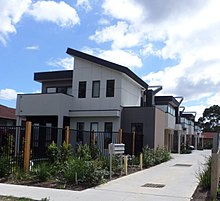One of the most prominent demographic factors influencing real estate demand is population growth and migration patterns. Regions experiencing significant population growth due to factors such as job opportunities, affordable housing, and quality of life tend to see increased demand for real estate. Conversely, areas with declining populations may face challenges in sustaining demand, leading to a surplus of available properties. Age demographics also play a crucial role in shaping real estate demand. As the population ages, there is typically an increased demand for retirement communities, senior housing, and accessible amenities. On the other hand, younger demographics, such as millennials and Generation Z, often drive demand for urban living, rental properties, and homes with modern amenities and technology integration. Income levels and economic factors are essential determinants of real estate demand and supply.

Higher income levels enable individuals and families to afford properties that are more expensive and drive demand for luxury real estate, upscale neighborhoods, and premium amenities. In contrast, regions with lower income levels may experience challenges in attracting investment and sustaining demand for higher-priced properties. Household size and composition also influence real estate preferences and demand. Changes in family structures, such as an increase in single-person households, may lead to higher demand for smaller living spaces, condominiums, and apartments. Conversely, growing families may seek larger homes, suburban communities, and properties with ample space and amenities to accommodate their needs. Cultural and lifestyle preferences further shape real estate demand and supply dynamics. Preferences for urban living versus suburban or rural environments, access to recreational and cultural amenities, and proximity to transportation hubs and employment centers all influence real estate choices.
Additionally, changing societal norms and values, such as sustainability and environmental consciousness, are increasingly influencing demand for eco-friendly and energy-efficient properties. Supply-side dynamics in real estate are also influenced by demographics and go now. Developers and investors closely monitor demographic trends to identify opportunities for new construction, redevelopment, and renovation projects. Understanding the evolving needs and preferences of different demographic groups enables stakeholders to align supply with demand more effectively and capitalize on emerging market trends. Demographics exert a profound influence on real estate demand and supply dynamics, shaping market trends, investment opportunities, and development strategies. By analyzing demographic data and understanding shifting preferences and behaviors, stakeholders can adapt to changing market conditions and position themselves for success in the dynamic real estate landscape.
